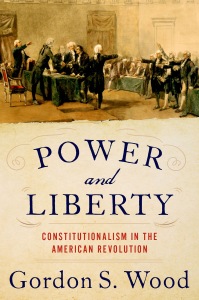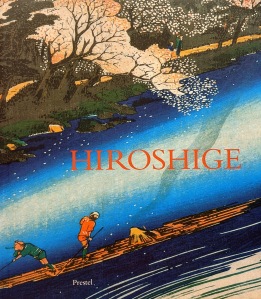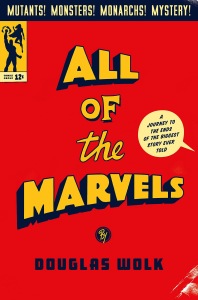Book Notes, June–December 2021
Wayne writes: In no particular order, here are books I read during the past few months. It’s an embarrassingly small number, which I put down to: our having subscribed to the New Yorker, which has distracted from books (but is such a civilized magazine); my having taken up crossword puzzles; and my being occupied with things to do as I approach retirement from my library job after more than forty-five years.
The Cause: The American Revolution and Its Discontents, 1773–1783 by Joseph J. Ellis. Liveright, 2021. I’ve enjoyed Ellis’s books on the Revolutionary period (e.g. The Quartet, the Pulitzer Prize-winning Founding Brothers). He has an easy style, and I’ve always learned something new from him, which I’ve been able to use in lecturing at Williams College about American documents. That said, The Cause is a short book for a big subject, and feels miscellaneous in its coverage, skipping over some events I would have liked to see treated more fully. Well, I’m sure it’s the book Ellis wanted it to write, and we should judge it as such. But it could have used better copy-editing: it has a few typos and one real bloomer, where Ellis credits the phrase ‘the shot heard round the world’ to Longfellow rather than Emerson, and it frequently has ‘comprise’ when ‘compose’ would be correct.
 Power and Liberty: Constitutionalism in the American Revolution by Gordon S. Wood. Like Joseph Ellis, Gordon Wood is one of the leading scholars of the early American republic. His manner of writing is more staid, and his style can be repetitive, but this book too opened my eyes to a great deal of history I had never learned, such as that some who supported the proposed federal constitution did so because Rhode Island (especially) had harmed upper-class financial interests by flooding the country with paper money not backed by specie. Whenever I read books like Power and Liberty I think back to high school, where everything was compressed, leaving no time for interesting stories or sidelights, and to college, where the first course in American history was hijacked by the professor’s personal interests: ‘You heard all about the Pilgrims in high school, we’re going to spend the semester talking about slavery!’ Then the instructor in American History 102 assumed that we had, in fact, heard about the Pilgrims, and everything else up to the Civil War, in 101; but we hadn’t, so were at a disadvantage.
Power and Liberty: Constitutionalism in the American Revolution by Gordon S. Wood. Like Joseph Ellis, Gordon Wood is one of the leading scholars of the early American republic. His manner of writing is more staid, and his style can be repetitive, but this book too opened my eyes to a great deal of history I had never learned, such as that some who supported the proposed federal constitution did so because Rhode Island (especially) had harmed upper-class financial interests by flooding the country with paper money not backed by specie. Whenever I read books like Power and Liberty I think back to high school, where everything was compressed, leaving no time for interesting stories or sidelights, and to college, where the first course in American history was hijacked by the professor’s personal interests: ‘You heard all about the Pilgrims in high school, we’re going to spend the semester talking about slavery!’ Then the instructor in American History 102 assumed that we had, in fact, heard about the Pilgrims, and everything else up to the Civil War, in 101; but we hadn’t, so were at a disadvantage.
Kay Nielsen: An Enchanted Vision: The Kendra and Allan Daniel Collection by Meghan Melvin, with an essay by Alison Luxner. Museum of Fine Arts, Boston, 2021. We saw a lovely exhibition of Danish artist Nielsen’s (1886–1957) works from the Daniels’ collection at the MFA two years ago. This book, less a catalogue of the exhibition than a related monograph, has finally appeared. It’s an attractive volume, well illustrated and with an intelligent text. Nielsen’s art is endlessly fascinating, akin to work by Aubrey Beardsley and Jessie M. King and clearly influenced by Japanese prints, but uniquely his own, very unlike illustrations by contemporaries and rivals such as Rackham and Dulac. Unlike so many other art books Christina and I are reading these days, the designer of Kay Nielsen has paid attention to type size versus length of line, so that the text blocks aren’t a challenge for the eyes.
John Hassall: The Life and Art of the Poster King by Lucinda Gosling. Unicorn, 2021. Hassall (1868–1948) is best known today for his 1908 travel poster Skegness Is SO Bracing and its successors, showing a jolly fisherman prancing on a Lincolnshire beach, but this was only the smallest part of an enormous output. Hassall worked hard, and he worked fast. Gosling says perhaps more than she needs to about the artist, his life, and his methods – one can’t complain that she left something out – but it’s an interesting account of a commercial artist in Britain of the period, and not incidentally of the business of art at that time. One could wish, however, for a larger format: so many of the illustrations are tiny, and their captions (in narrow sans-serif) tinier still.
Questland by Carrie Vaughn. Mariner Books, 2021. A bit of fluff, really, but amusing. I’m a selective fan of Vaughn’s novels (Bannerless, for example), and Questland seemed up my street. The hero is a literature professor with expertise in fantasy, hired to help a mercenary strike team penetrate the defences of a high-tech island being developed as an amusement destination with animatronic dragons, unicorns, and other elements of myth and magic. It’s sort of Jurassic Park crossed with Ready Player One. RPG and Tolkien references abound.
 Hiroshige: Prints and Drawings by Matthi Forrer, with essays by Suzuki Jūzō and Henry D. Smith II. Prestel, 1997. An account of the work of Japanese artist Utagawa Hiroshige (1797–1858), one of the leading creators of woodblock prints. The book has many well-printed illustrations, which however represent only a fraction of Hiroshige’s pictures. In addition to their intrinsic beaity, the reproductions given here are interesting for similarities to be found between some of Hiroshige’s prints and elements in Tolkien’s art, especially for The Hobbit. We know that Tolkien was attracted to Japanese prints, and some of his illustrations have a stylistic sympathy with Hiroshige’s work, more so than, say, that of Hokusai.
Hiroshige: Prints and Drawings by Matthi Forrer, with essays by Suzuki Jūzō and Henry D. Smith II. Prestel, 1997. An account of the work of Japanese artist Utagawa Hiroshige (1797–1858), one of the leading creators of woodblock prints. The book has many well-printed illustrations, which however represent only a fraction of Hiroshige’s pictures. In addition to their intrinsic beaity, the reproductions given here are interesting for similarities to be found between some of Hiroshige’s prints and elements in Tolkien’s art, especially for The Hobbit. We know that Tolkien was attracted to Japanese prints, and some of his illustrations have a stylistic sympathy with Hiroshige’s work, more so than, say, that of Hokusai.
Guarded by Dragons: Encounters with Rare Books and Rare People by Rick Gekoski. Constable, 2021. Book dealer and literary treasure-hunter Gekoski supplies thirteen essays on writers, literary research, and the adventures and perils of the book trade. He drops a lot of names, from D.H. Lawrence to J.K. Rowling, among them two or three I know, or knew, personally from my years as a librarian. I found myself nodding frequently in agreement at his afterword: ‘I regret the gradual decline of connoisseurship, a term more often associated with the art market, but which can be pertinent to sophisticated book collecting.’ My first boss at Williams said that it was his goal in the Chapin Library to teach the students to be connoisseurs of books, and he did succeed with a few; but this wasn’t, and isn’t, the goal of the faculty, and it’s their work we’re meant to support. ‘For many of us [booksellers, bookselling] is a vocation, rather than a job, which can be practised to the very edges of senility, and sometimes beyond. You can still hunt treasure even when you don’t remember where it is. But if we carry on, it is not always a comfortable process . . . it is too easy, and in a way too agreeable, to compare the past favourably with the present.’ I’ve bought and worked with books and manuscripts, professionally, about as long as Gekoski has sold them, and although it has been a job, it has also been part of my life – what I think Gekoski is getting at – not something I leave at the office at five o’clock. And although much of the present is preferable to the past (I do not miss typing catalog cards), many good things of the past were better (more civilized, more elegant) than what pertains now.
Imperial Splendor: The Art of the Book in the Holy Roman Empire, 800–1500 by Jeffrey F. Hamburger and Joshua O’Driscoll. Morgan Library & Museum/D. Giles, 2021. Published to accompany the exhibition held at the Morgan Library & Museum, New York, on now until 23 January 2022; Christina and I saw it last month. The book is informative but hard on the eyes, with lines of type spread out both horizontally and vertically. Its colour reproduction is good, but some of its pictures are much smaller than the original book or page.
The Left-handed Twin by Thomas Perry. Mysterious Press, 2021. The ninth of Perry’s Jane Whitefield novels, featuring a Native American woman who helps people in fear of their lives disappear into a new identity. These books (since Vanishing Act, 1996) have been entertaining, sometimes gripping, but in the new story the author seems to have been concerned only to write a potboiler to attract fans of the series (clearly, it did the trick). The situations are familiar, and so is much of the dialogue. As in every book, Jane is teaching a frightened client to live a secret life, and as in Poison Flower (2012), criminals are trying to capture Jane in order to locate the people she has helped over the years. What we haven’t seen before is an ending this contrived and unsatisfying. With The Left-handed Twin (the title refers to Hanegoategeh, the Destroyer, a Native American devil figure), Perry has taken this series perhaps as far as it should go.
 Nature’s Palette: A Color Reference System from the Natural World. Princeton University Prss, 2021. I need to preface this note with mention of The Anatomy of Colour: The Story of Heritage Paints and Pigments by Patrick Baty (Thames & Hudson, 2017; the U.S. edition, from the same publisher, is The Anatomy of Color – presumably someone felt that Americans would not buy the book with the -our spelling, but I did). I see that I bought The Anatomy of Colour in 2017, but didn’t read it until earlier this year or late last year, and seem to have overlooked it when writing previous Book Notes. Its history of paints is fascinating, and it has a strong bibliographical component, describing house-painting and colour manuals through the years, and it’s beautifully designed. Then, not too many months ago, I ran across an algorithm-generated recommendation for Nature’s Palette, which has a similar design aesthetic, and again the participation (but not sole authorship) of Patrick Baty, historic paint consultant. The later book, also a visual delight and bibliographically informative, takes as its point of departure the importance and influence of German geologist Abraham Gottlob Werner’s Nomenclature of Colours, devised in 1774 and subsequently expanded and refined by others.
Nature’s Palette: A Color Reference System from the Natural World. Princeton University Prss, 2021. I need to preface this note with mention of The Anatomy of Colour: The Story of Heritage Paints and Pigments by Patrick Baty (Thames & Hudson, 2017; the U.S. edition, from the same publisher, is The Anatomy of Color – presumably someone felt that Americans would not buy the book with the -our spelling, but I did). I see that I bought The Anatomy of Colour in 2017, but didn’t read it until earlier this year or late last year, and seem to have overlooked it when writing previous Book Notes. Its history of paints is fascinating, and it has a strong bibliographical component, describing house-painting and colour manuals through the years, and it’s beautifully designed. Then, not too many months ago, I ran across an algorithm-generated recommendation for Nature’s Palette, which has a similar design aesthetic, and again the participation (but not sole authorship) of Patrick Baty, historic paint consultant. The later book, also a visual delight and bibliographically informative, takes as its point of departure the importance and influence of German geologist Abraham Gottlob Werner’s Nomenclature of Colours, devised in 1774 and subsequently expanded and refined by others.
 All of the Marvels by Douglas Wolk. Profile Books, 2021. Wolk, a critic of music and comics, read 27,000-plus superhero books published by Marvel Comics in order to write about them as a vast, interconnected epic, and about their creators (especially Lee, Kirby, and Ditko) and their influence on popular culture. I don’t entirely buy the interconnected-epic argument, given the many restarts and reinventions since the Marvel stories began in the 1960s, but as an old (literally) comics hand, I found it interesting to read of Wolk’s journey and to look back on my own on-and-off experiences with Marvel. I was a Batman and Superman fan from the late fifties, following their titles as well as delighting in the occasional DC surprise, such as the Doom Patrol in My Greatest Adventure and the Metal Men in Showcase. Then, aged eleven, I ran across Fantastic Four no. 20, November 1963, ‘The Mysterious Molecule Man!’ and was hit hard by Jack Kirby’s art (much more so than by Stan Lee’s script). I didn’t know who these characters were, but suddenly Superman and Batman were prosaic in comparison. I started an X-Men run with no. 7 (‘The Return of the Blob!’), and Spider-Man with no. 9 (‘The Man Called Electro!’, wowed by Steve Ditko’s drawing) * – it was an exciting time. I gave up comics in high school, as my interests turned elsewhere (especially to Tolkien), but was drawn back in the early eighties when I read that Jean Grey of X-Men had died; at that time a comic hero’s death was not yet common, except in an ‘imaginary story’, and I was intrigued. Comics dealers having become a thing, I was able to find back issues, and became hooked by the Claremont and Byrne/Austin X-Men, Byrne’s ‘back to basics’ revamp of the Fantastic Four, and so much else (such as the Levitz/Giffen Legion of Super-heroes and the Wolfman/Pérez New Teen Titans, returning also to DC’s line).
All of the Marvels by Douglas Wolk. Profile Books, 2021. Wolk, a critic of music and comics, read 27,000-plus superhero books published by Marvel Comics in order to write about them as a vast, interconnected epic, and about their creators (especially Lee, Kirby, and Ditko) and their influence on popular culture. I don’t entirely buy the interconnected-epic argument, given the many restarts and reinventions since the Marvel stories began in the 1960s, but as an old (literally) comics hand, I found it interesting to read of Wolk’s journey and to look back on my own on-and-off experiences with Marvel. I was a Batman and Superman fan from the late fifties, following their titles as well as delighting in the occasional DC surprise, such as the Doom Patrol in My Greatest Adventure and the Metal Men in Showcase. Then, aged eleven, I ran across Fantastic Four no. 20, November 1963, ‘The Mysterious Molecule Man!’ and was hit hard by Jack Kirby’s art (much more so than by Stan Lee’s script). I didn’t know who these characters were, but suddenly Superman and Batman were prosaic in comparison. I started an X-Men run with no. 7 (‘The Return of the Blob!’), and Spider-Man with no. 9 (‘The Man Called Electro!’, wowed by Steve Ditko’s drawing) * – it was an exciting time. I gave up comics in high school, as my interests turned elsewhere (especially to Tolkien), but was drawn back in the early eighties when I read that Jean Grey of X-Men had died; at that time a comic hero’s death was not yet common, except in an ‘imaginary story’, and I was intrigued. Comics dealers having become a thing, I was able to find back issues, and became hooked by the Claremont and Byrne/Austin X-Men, Byrne’s ‘back to basics’ revamp of the Fantastic Four, and so much else (such as the Levitz/Giffen Legion of Super-heroes and the Wolfman/Pérez New Teen Titans, returning also to DC’s line).
Two days ago, the New York Times ran an article by Julie Lasky, ‘How Many Books Does It Take to Make a Place Feel Like Home?’ Lasky quotes Reid Byers, author of the recent book The Private Library: The History of the Architecture and Furnishing of the Domestic Bookroom (Oak Knoll Press), who has coined the term book-wrapt ‘to describe the exhilarating comfort of a well-stocked library’. Byers suggests 500 volumes as a minimum number for ‘any self-respecting home library’, though he allows that a smaller quantity is possible, in a smaller space. One of the accompanying photos shows a ‘book wall’ which is more whatnots than books, so really a cheat to think of it as a ‘library’. There are more than a thousand comments attached to the article as of this writing, predictably a blend of ‘never enough books’ and ‘get a Kindle’. (Yes. No.)
Comments are closed.

Hi! I’ve been especially looking forward to a new post from you, as it allows me the opportunity to ask a question; I can’t seem to find any way to contact you except for replying to your blog. Is there another way?
My question: As you know, Archibald Thorburn’s prints in Lord Lilford’s “Birds of the British Islands” (1891) and T.A. Coward’s “Birds of the British Isles and their Eggs” (1919) were the main influence for “Bilbo woke up with the early sun in his eyes” by JRRT. This is well documented in “Pictures by JRRT,” Douglas A. Anderson’s “The Annotated Hobbit,” as well as your own excellent Artist and Illustrator series (where you originally called him ‘Alexander,’ which was subsequently corrected to ‘Archibald’ in your corrigendum.) There are many online sources as well.
So why in the world is this information not included in your “Chronology and Guide?”
Considering the minutiae that IS included in this staggering work of research…this omission…BUGS ME (lol).
Have I missed something? I tried to be very thorough in searching for this information in your books.
Thanks,
Drew Foster
Just wanted to add that I enjoyed this ‘edition’ of Book Notes; I wasn’t *just* using it as an excuse to ask a question. I read everything you two post.
Hi, Drew,
As to your first question, it’s possible to find through Google not one but two email addresses for us (assuming an address for Wayne is good for us both), otherwise we don’t choose to put our addresses out there.
In regard to Thorburn — well, if we were to include every piece of Tolkien minutiae in our Companion and Guide, it would need not only a different structure (and purpose) for the book, but also many more volumes. Consider, for example, all of the facts about Tolkien in our Lord of the Rings: A Reader’s Companion: only some of these are also in the Companion and Guide, because the first is annotating a specific work, and the second is deliberately of a more general and broader nature. We mention Thorburn in Artist and Illustrator and Art of The Hobbit, because the source is pertinent there; we could have mentioned him in, say, our Reader’s Guide article on Tolkien’s reading, but then we could have mentioned many more books there, and the article would have grown beyond the concise treatment we intended, on a level with our other articles.
Wayne,
Here is a very useful web site concerning the early history of our nation that might be of interest to you. https://americanminute.com/blogs/todays-american-minute This is the web site of William J. Federer. It illuminates the real place of religion at the time of the founding of our nation.
We had not received any snow this season until late Christmas night. Now we have quite enough. The timing of this snowfall event makes for a very interesting Christmas season. Was this just chance?
I hope that you and Christina had a pleasant Christmas, and wish you the best in the coming New Year.
Kindest regards,
David Doerr
RAINier, OR
I too am bothered by poor proofreading / avoidable errors in books. I proofread for a living (and I choose to use that OED spelling of ‘proofread’). I was stunned to find so many in the Tolkien Society’s recent ‘Tolkien and the Sea’ publication.
In regards to Guarded by Dragons is not one’s life focus to achieve 積ん読 達人 (Tsundoku Master) status? 😉
Thank you very much for this line:
“… a blend of ‘never enough books’ and ‘get a Kindle’. (Yes. No.)”
Made my day.
I’m interested in purchasing some Tolkien Collector Back Issues but that page has not been updated since 2011. Do the instructions for purchasing still apply?